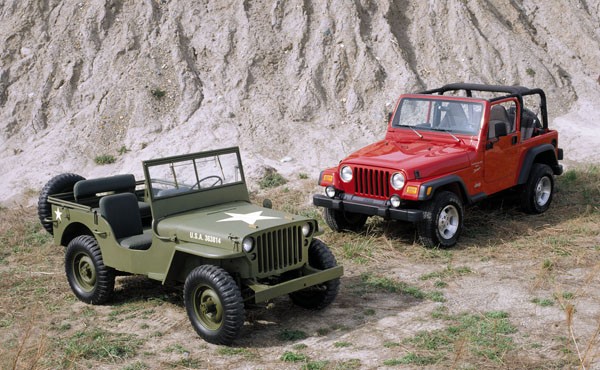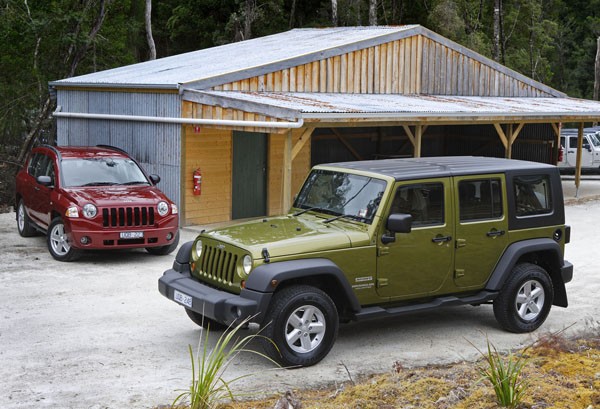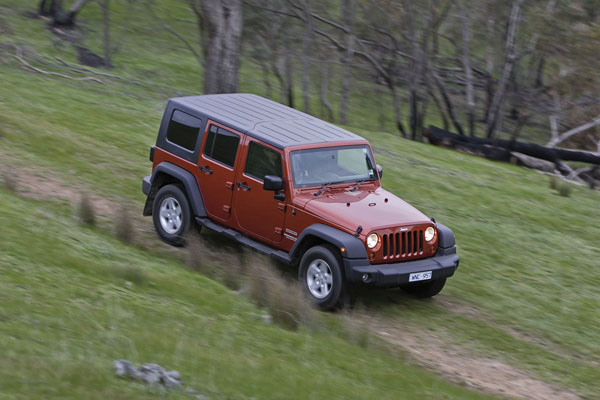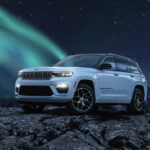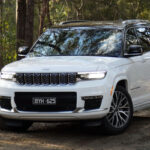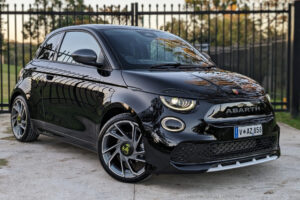Todays Jeep Wrangler can trace its ancestry directly back to the famed World War II Jeep, “the car that won a war”. Obviously there have been improvements and refinements over the years, but these have been done with an eye on the heritage.
Wrangler is a real off-road vehicle, a vanishing commodity in these days of people movers dressed up with big wheels and macho bodies. Just pull off the Jeep’s soft-top, be prepared to get down and dirty, and you can tackle rocky bush areas and have the time of your life. You can take a Jeep to rough ‘n’ tough places that will break other so-called 4WDs and it will come back looking for more.
Ride comfort could be better, though compared to the original WW2 units later Wranglers feel like Cadillacs to ride in. Handling is OK, but this isn’t the sort of car you toss at bends to experience the joys of power oversteer. Keep a Wrangler within its limits or it could turn and bite you; though later models do have some electronic aids lurking in the background to help.
Jeep sales prior to 1996 were a bit hit and miss in Australia. Sometimes virtually none were sold, then an enthusiastic entrepreneur would import some for a while. Since 2012 Jeep Wrangler is imported directly by the FCA (Fiat Chrysler Australia) and its future feels very secure.
The soft-top is pretty slow and fiddly to operate and flaps a lot at highway speeds on older models, though it’s not too bad from JK onwards. On the other hand its water sealing is surprisingly good for its type. The real Jeep enthusiasts even pull off the doors and fold down the windscreen of the older models to get that full open-air effect when they are out enjoying the great Australian outback.
Post-96 models are probably the ones to aim for if you are an everyday driver, leave the others for the full-on enthusiasts – or become an enthusiast yourself. We suggest starting from the Jeep JK-7 from February 2007 if you’re looking for reasonable comfort.
In its latest form the Jeep Wrangler is more aerodynamic, quieter and more stable than its old-fashioned predecessors. Thankfully, it still a bit raw around the edges – love it!
Until the arrival of the JK Series in 2007 all Wranglers had two doors, a somewhat awkward four-door, titled the Wrangler Unlimited was then introduced and gives reasonable access to the rear seats. It’s no surprise it has proven popular.
For many years power came from an old-style 4.0-litre straight-six with an overhead-valve layout and two valves per cylinder. The engine gets harsh in the upper reaches, but doesn’t have to be revved as it has plenty of grunt low down. A modern 3.8-litre V6 replaced the old stager in the JK series in 2007. A big capacity four-cylinder 2.8-litre turbo-diesel was introduced at the same time.
Wranglers used a five-speed manual gearbox until a new design six-speed arrived at the start of 2005. The automatic transmission was a three-speed unit prior to a much better four-speeder arrived in 2005. Diesel autos get five forward speeds.
The 2012 Wranglers were upgraded by the use of a modern 3.6-litre V6 petrol and a five-speed automatic transmission.
Spare parts for older models may take some hunting down, those for the 1996 and onwards vehicles may available over the counter, though if the used Wrangler you’re considering is more than 10 years old it might we advisable to check for parts availability with your local supplier. We have heard of no real complaints about prices.
Working on the Wrangler is a dream, there’s plenty of underbonnet space and a simple layout in the old fashioned manner. However, don’t tackle any jobs unless you’re confident in your ability and have a workshop manual at the ready. And leave all safety stuff to the professionals.
Insuring a Jeep doesn’t normally cause concern unless you have a poor claims history, when you might find that some companies are reluctant to take you on.
WHAT TO LOOK FOR
The Wrangler can soak up a lot of punishment, but can still be broken. Be careful as many are taken into serious off-road areas.
Dings and dents mean the Jeep has been used the way its maker intended, which may not be what you are looking for. Check the bumper corners, the doors, the sill panels under the doors and the underside bash plates for signs of conflict with the landscape.
Feel the gearbox for too-hard shifting, though it’s not all that good, even when new. Listen for crunches on fast downchanges and for a reluctance to change into fifth gear.
Be sure the high/low transfer lever works properly and doesn’t need too much effort to engage low range.
An automatic transmission that’s slow to go into gear could be nearing overhaul time, but most are rugged enough and should still have plenty of life left in them.
Check these transmission items yourself if you feel confident. If not, call an expert.
Be wary of a Wrangler that’s belonged to a would-be cowboy. You’ve seen them on the road: jacked up suspension, huge tyres, lots of driving lights and heaps of other macho stuff. These are often poorly engineered and badly driven.
Look at the seats, carpets, door trim and luggage area for signs of mistreatment.
HOW MUCH?
Budget on spending from $4000 to $6500 for 1998 Jeep Wrangler Sport; $7000 to $11,000 for a 2005 Sport; $11,000 to $17,000 for a 2007 Unlimited Rubicon; $16,000 to $22,000 for a 2008 Unlimited Sport; $21,000 to $29,000 for a 2012 Wrangler Unlimited Sport; and $27,000 to $36,000 for a 2014 Sport.
CAR BUYING TIP
Big boofy wheels on 4WDs can be a sign of a driver who doesn’t know how to drive – and probably with no knowledge of the damage that can be done to suspension systems by silly wheel choices.




